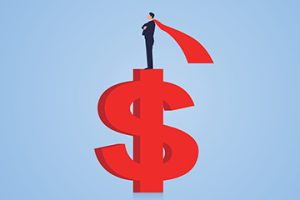The last two years have brought with them disruption at a scale that was previously unimaginable. Almost overnight, entire countries locked down, and work, business, communication, collaboration, and even social interaction had to go fully online. More than two years down the line, the world seems to be better equipped to deal with the virus and is attempting to get back to normal life. But the question is, can “normal” ever be the same? What is the future for business, and as we emerge from the pandemic, and how can enterprises offer fair value to all stakeholders? SunTec Confluence 2022 kicked off with an insightful keynote address on Thriving in Uncertainty and Benefitting from Crises by Bruno Marion, Futurist and Expert on Global Trends.
Earlier generations had one belief in common – that the future would bring progress and their children and grandchildren would live a better life than they did. Unfortunately, this no longer holds true. People today feel that future generations will lead a worse life than them in a world that is in a worse condition than it is now. This is primarily caused by the uncertainty brought about by the pandemic, climate change, recessions, and even war. But this is not the first time in history that there has been disease and war, and even recession. Why then are people feeling so unsure about the future now? The answer lies in 3 factors that are unique to the times we are living in now – numbers, connections, and speed.
150 years ago, there were about a billion people living on the planet. Today it is close to 8 billion. There has been a population explosion and each of us is feeling the pressure of having so many people compete for resources. The second factor is the exponential advancement of communication technology. Since 2014, the world has had more mobile phones than people, and more than half the population is connected to the Internet. Of course, this has its benefits. But we are also caught in a state of talking without listening and information overload. Lastly, the speed at which the world is evolving is unprecedented. The transition from the age of hunters and gatherers to the agriculture age took thousands of years, and from age of agriculture to the industrial era took a few hundred years. Today technology is evolving and disrupting life and business within a decade, leaving people with very little time to adapt.
These three factors have combined to create chaos in the modern world. But chaos is not necessarily a bad thing. It is not a good thing either. According to chaos theory, it is just a state of being or a system that interacts with its surroundings and changes accordingly. There are three stages of chaos. First, is a state of equilibrium when all things are constant and stable. Second, is that of oscillation, when there is some disruption to the state of equilibrium but not so strong that it causes any drastic changes. This is a linear system and can be predicted and controlled once one understands the pattern. The third is the tipping point when the system goes out of one’s control. The system is out of balance and extreme. Today, because of the population explosion, connections, and speed of change, we have reached the tipping point and are in a state of uncertainty and disorder.
There are only two things that can happen at this juncture. One, the system can collapse and two, a new, better equilibrium can emerge from the chaos. We are at a point in our evolution where many civilizations before us have been. And throughout history, this has been a point of no return. We simply cannot go back to how things were. What we thought of as normal cannot be achieved again. But we can help create a new normal or a new state of equilibrium in our personal lives, at work and within our society. Each one of us has a role to play in rebuilding our world. The butterfly effect theory states that even the tiniest actions in one part of the world can trigger bigger, more momentous changes elsewhere. And this is the key to emerging from this state of crisis. Organizations must have a clear vision and a strategy for uncertainty on how they want to move ahead and where they want to be in 20 years. And then work to achieve that breakthrough moment. Every individual, across the organization hierarchy has a critical role to play and can affect long-term positive changes by working in tandem with the organizational vision.
There was a time when only the rich and powerful could affect any change in the world. The butterfly effect has negated this status quo and put the power of positive transformation in the hands of every human being. We are at the tipping point today and have the opportunity to regain control and rebuild our lives, our organizations and our world to be more stable, secure and full of hope again. The time is now for each one of us to start taking the first steps to this end.





